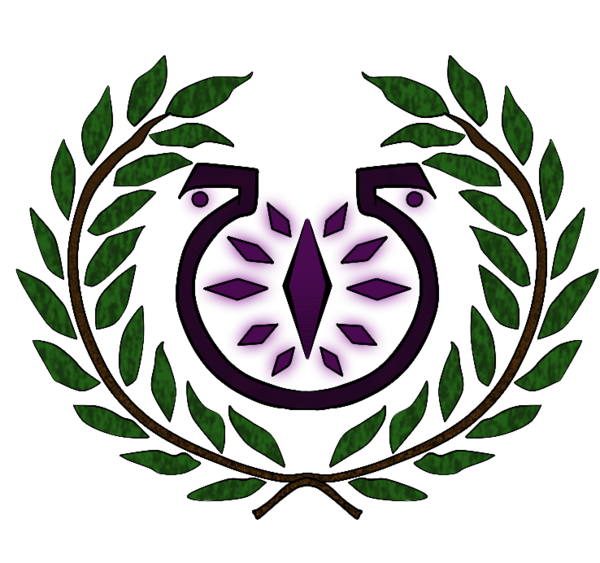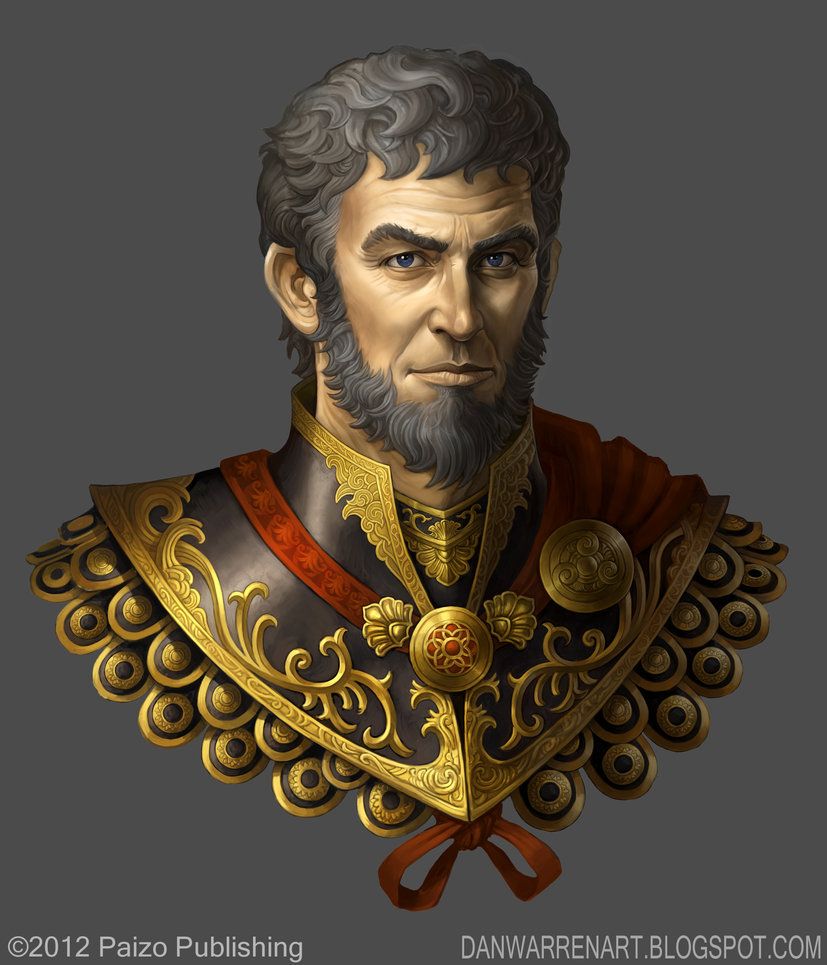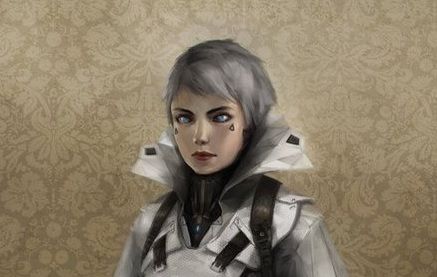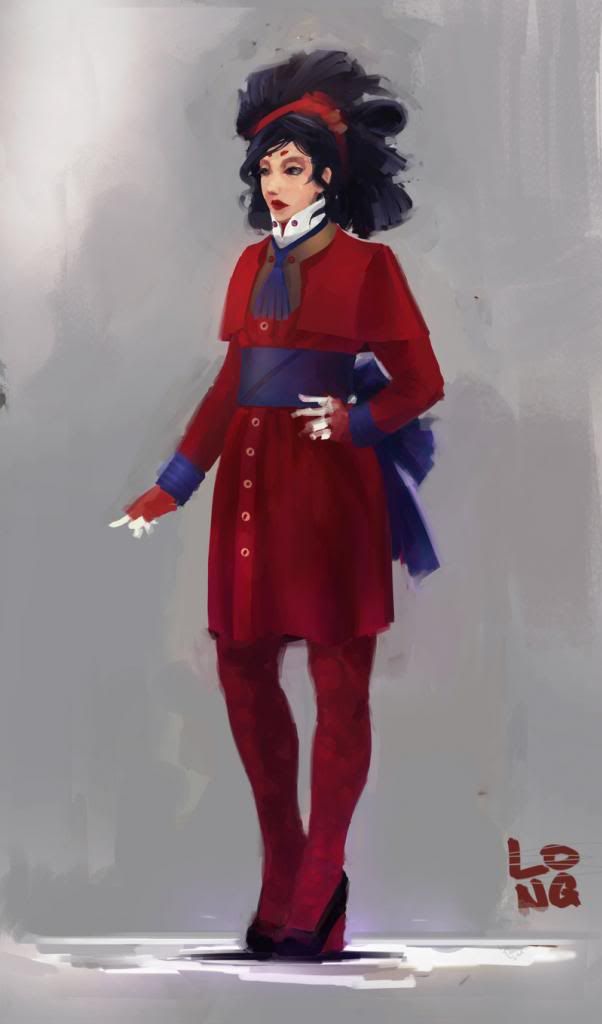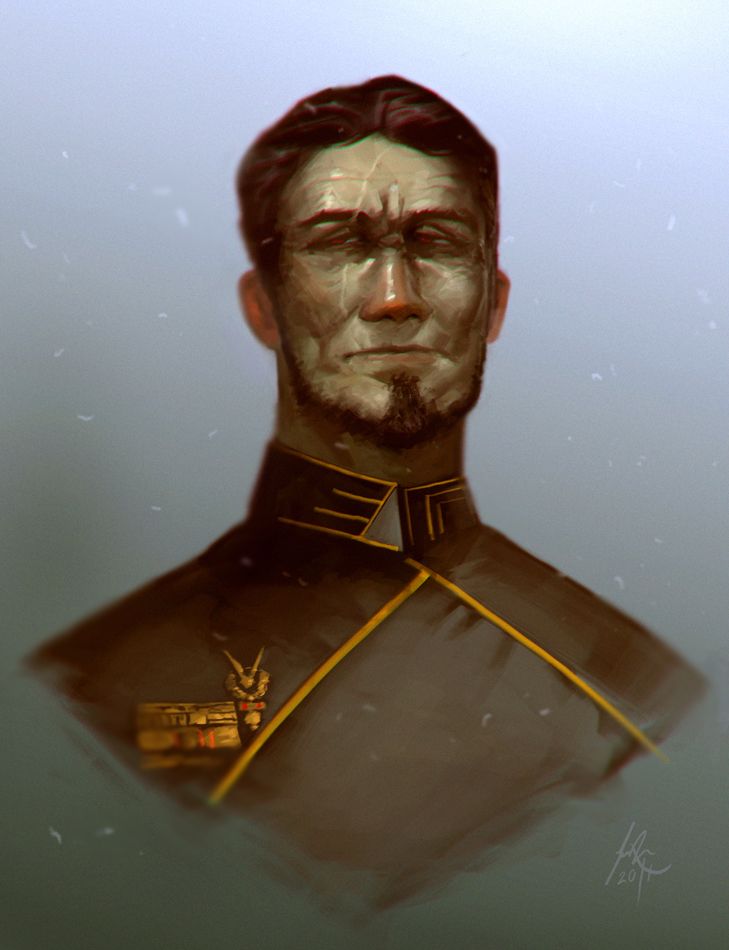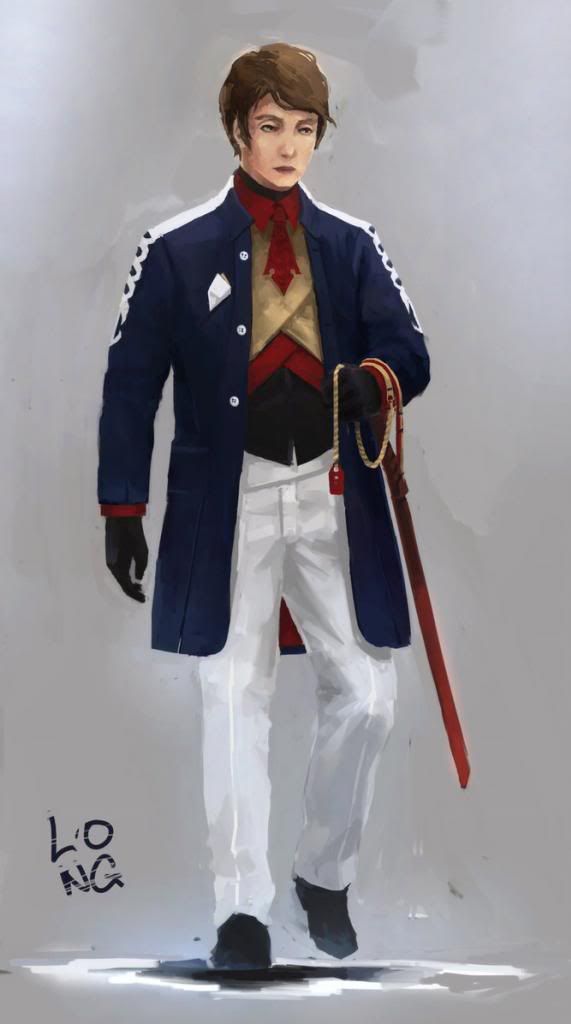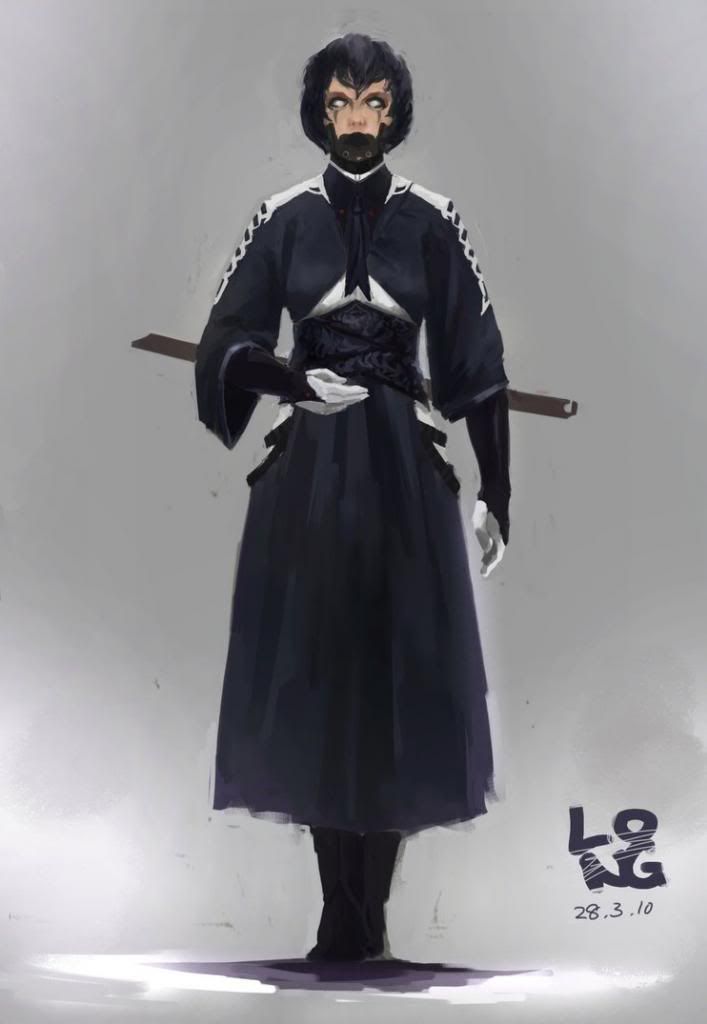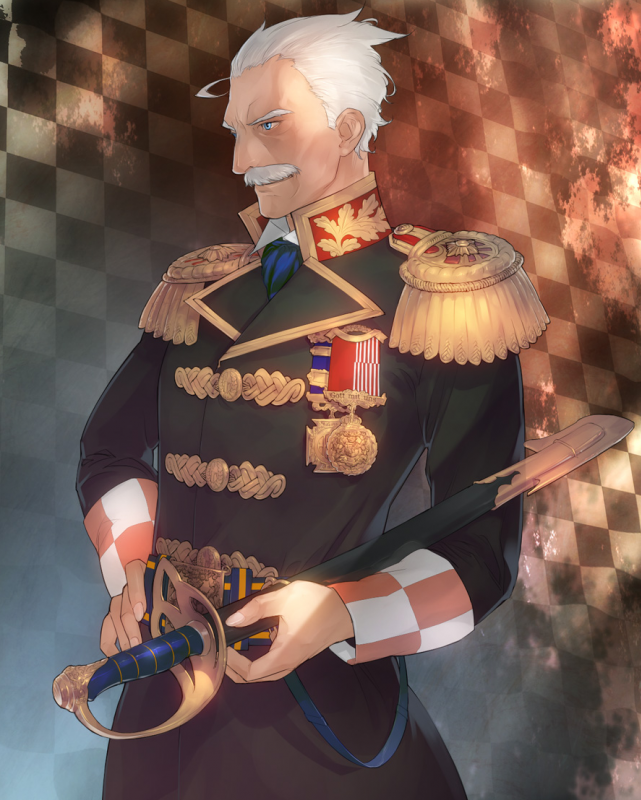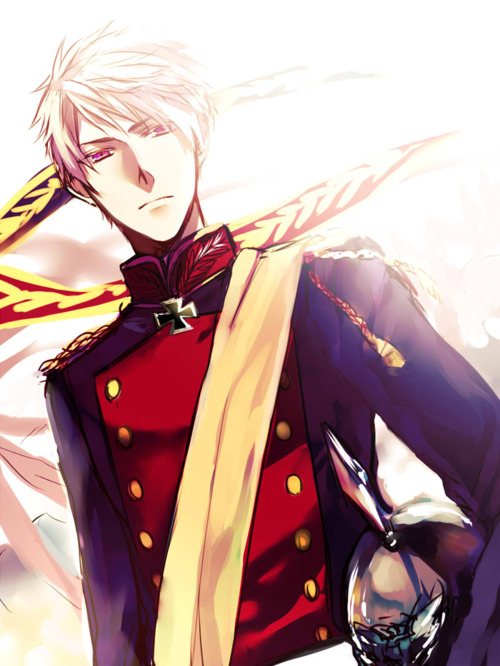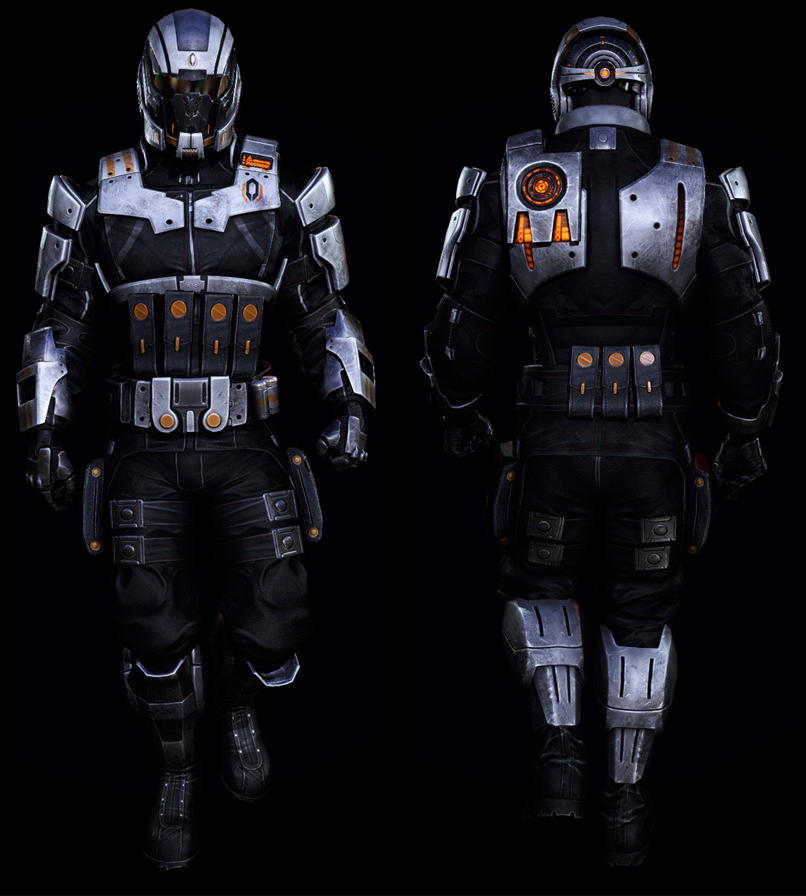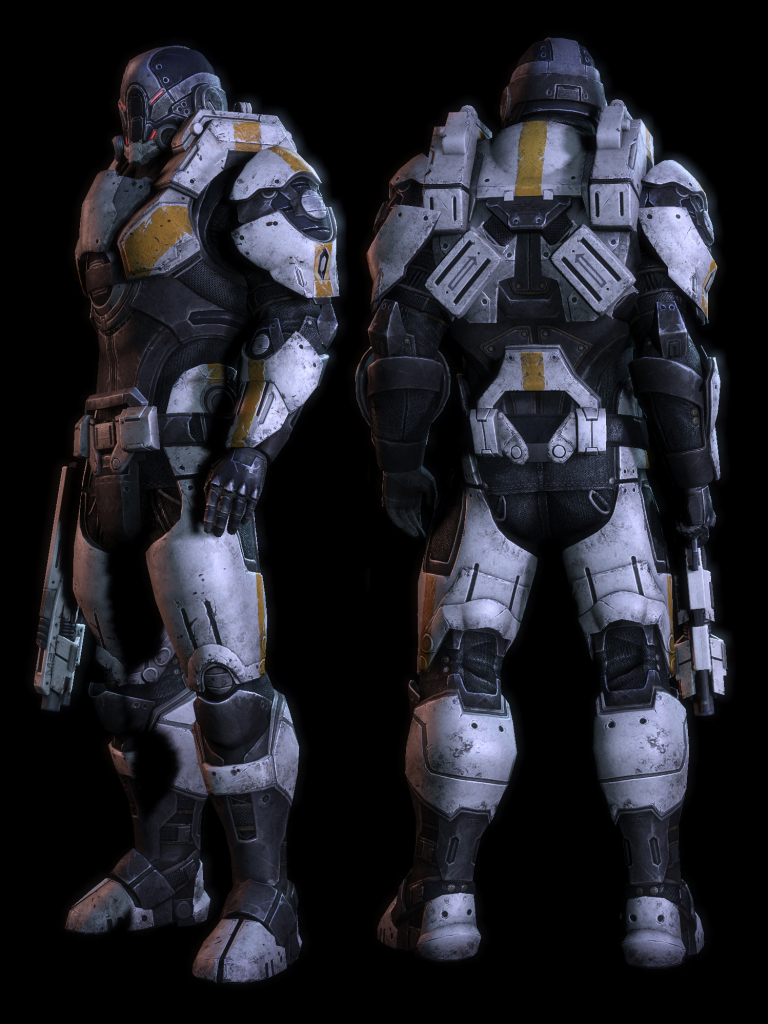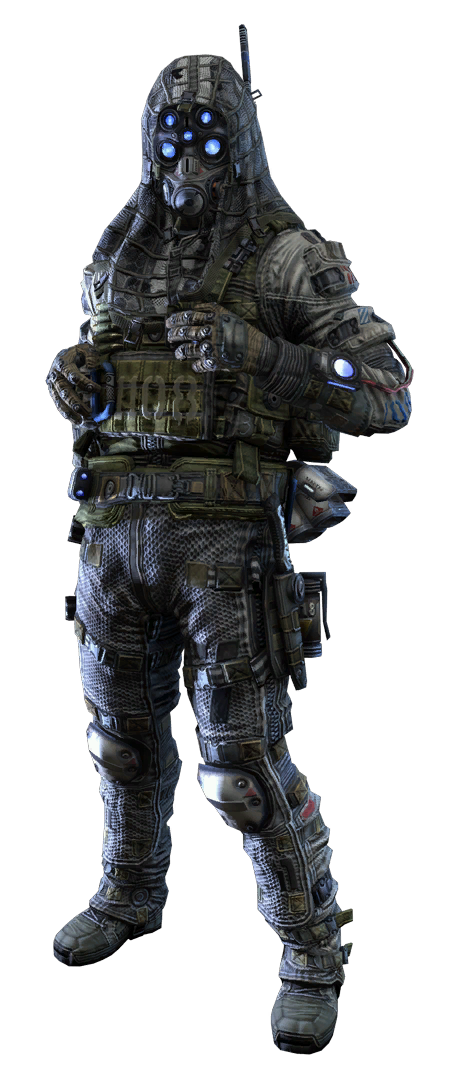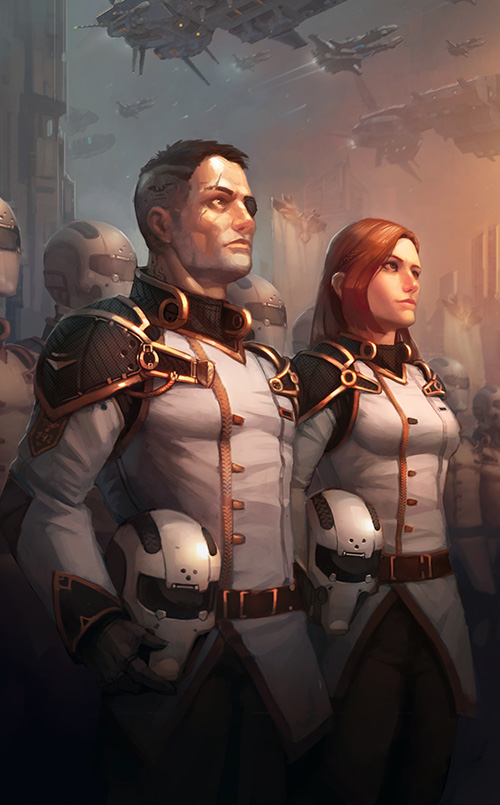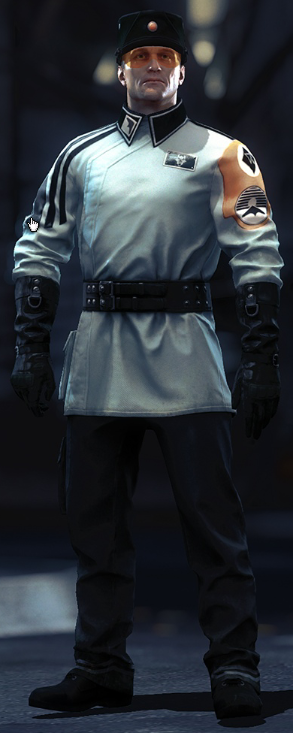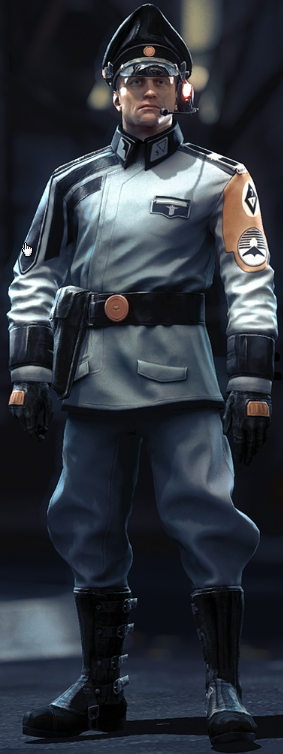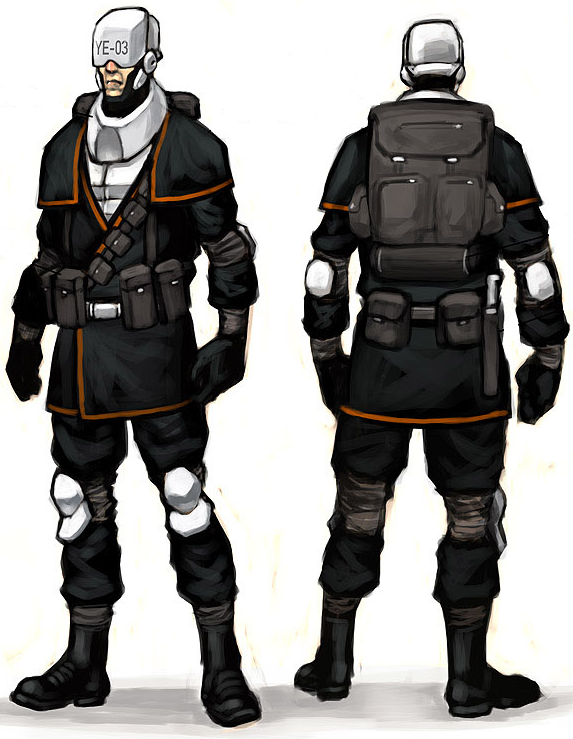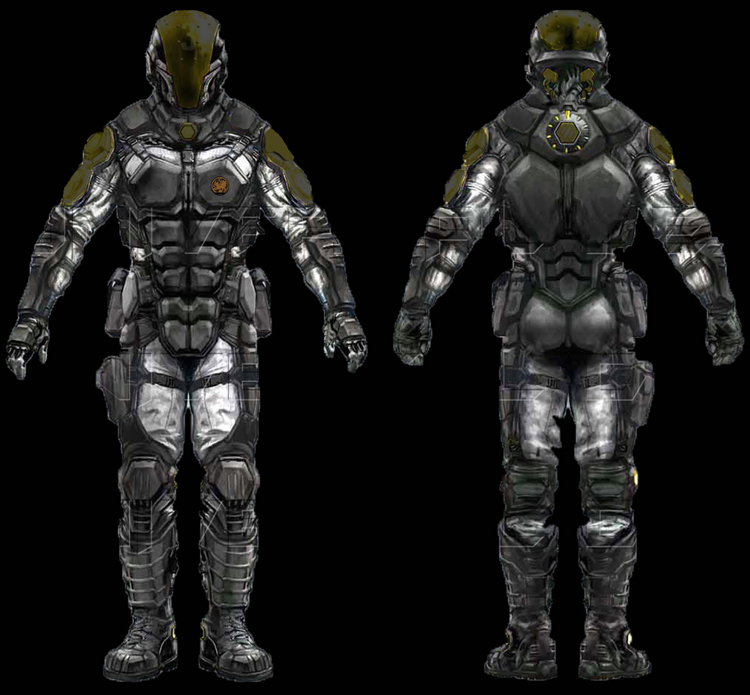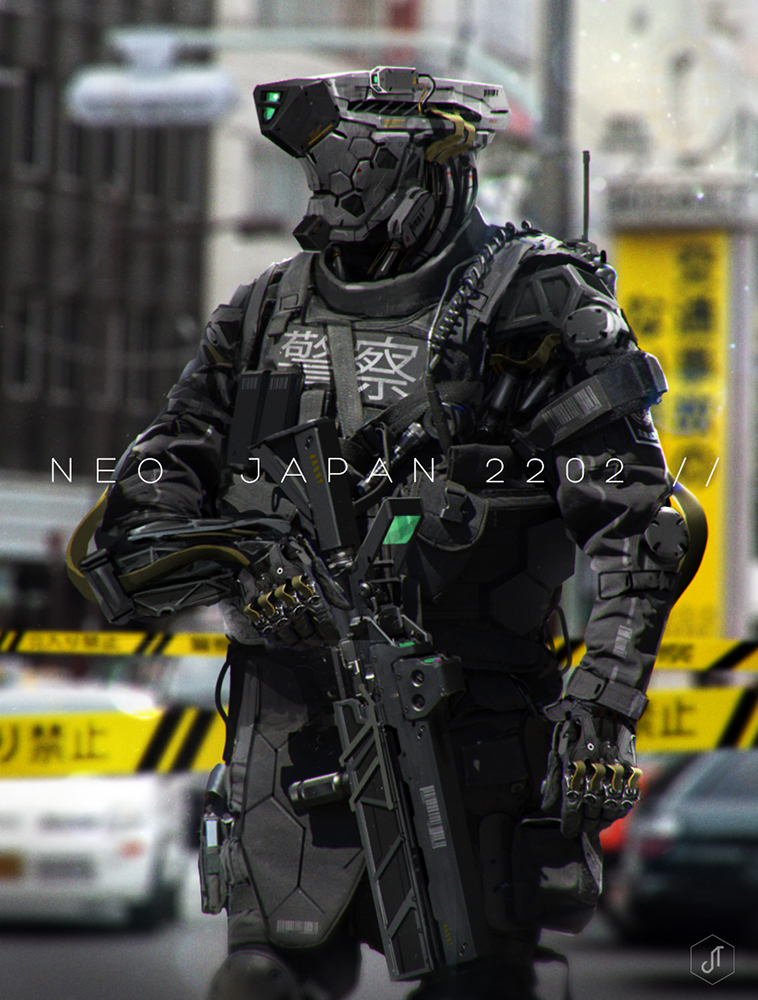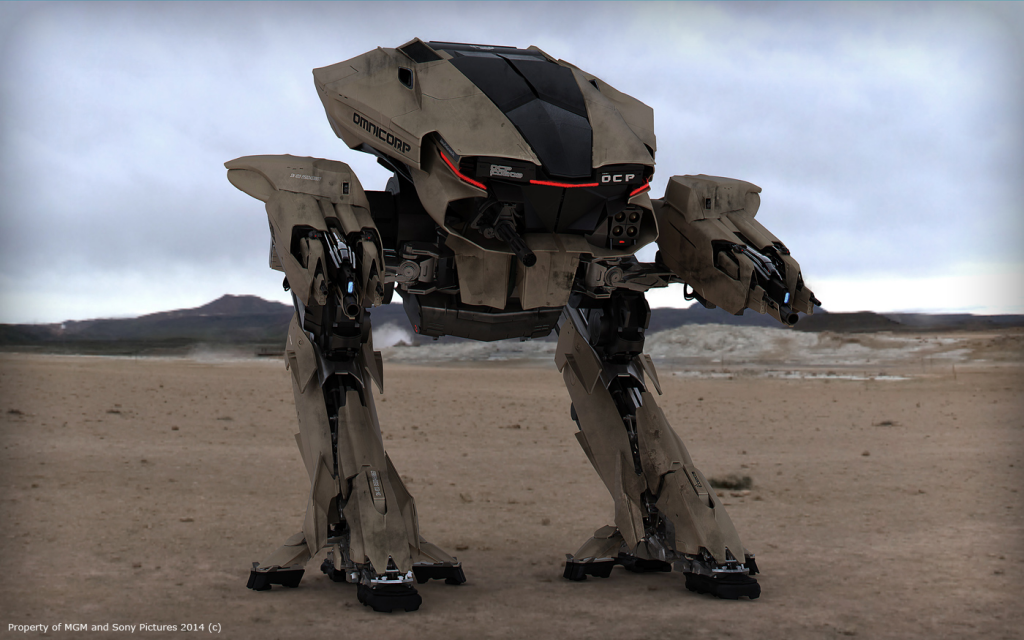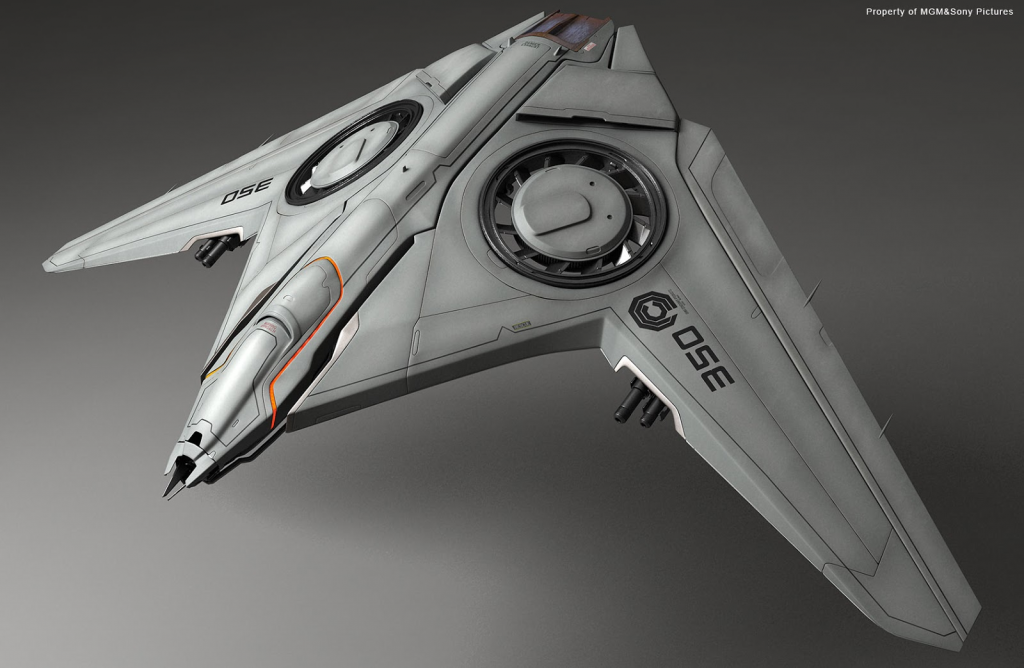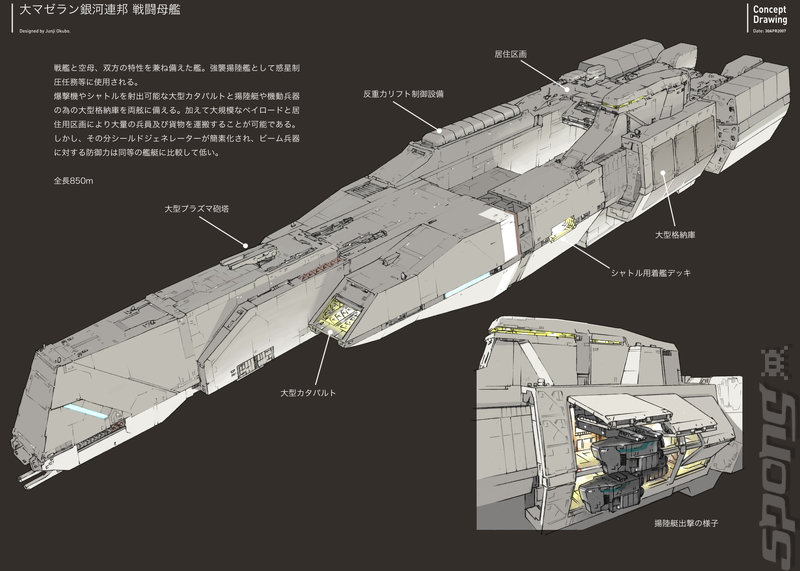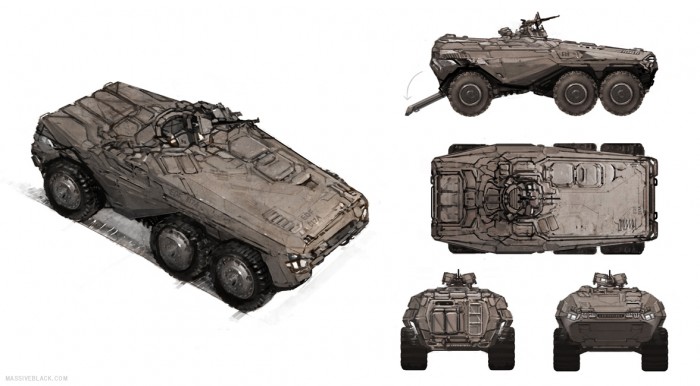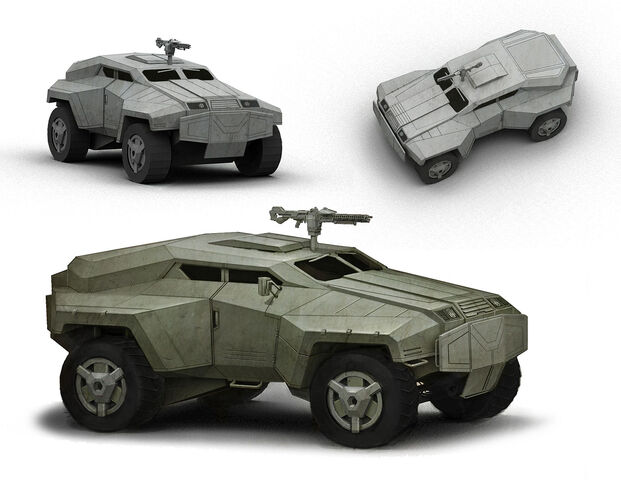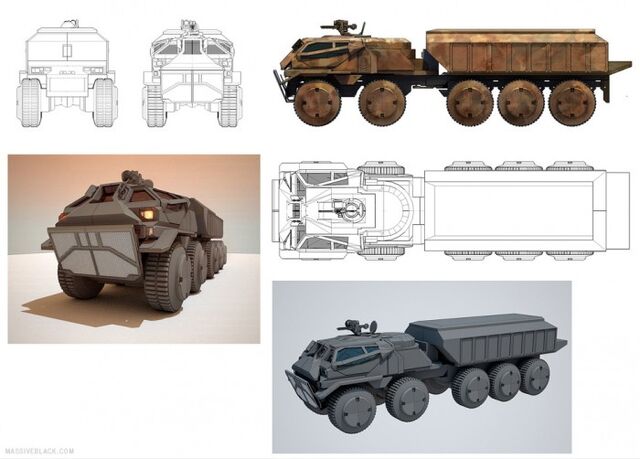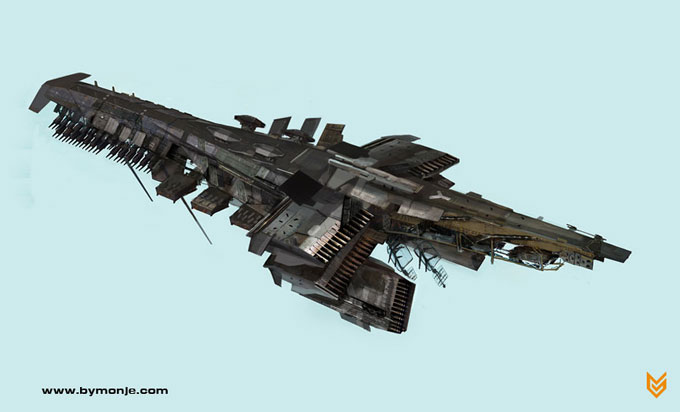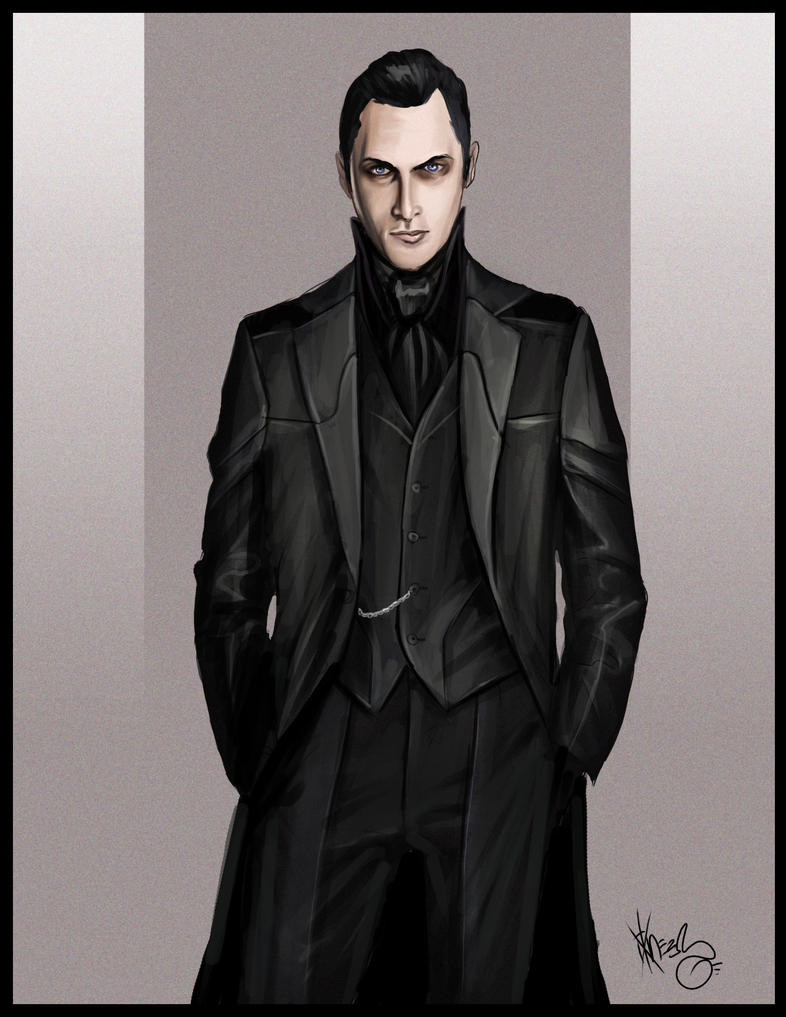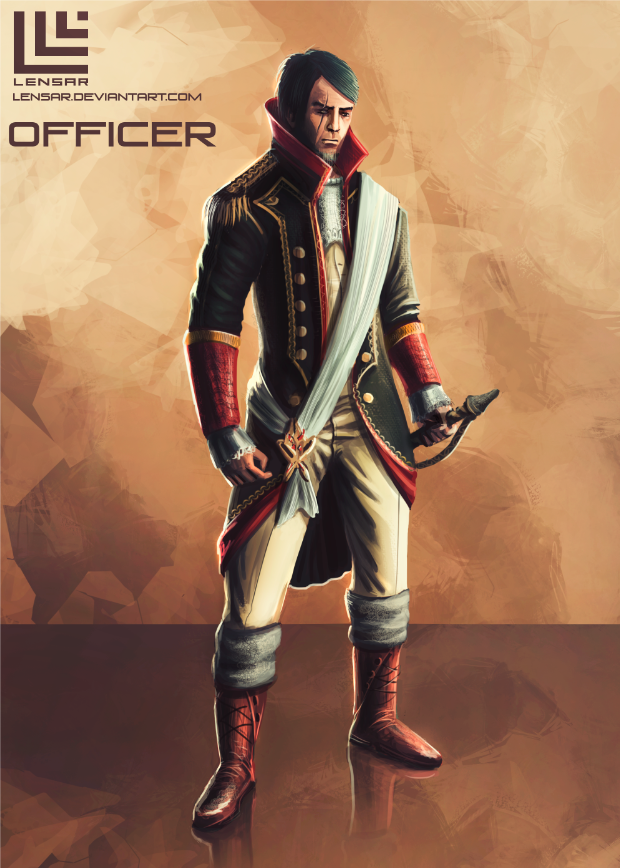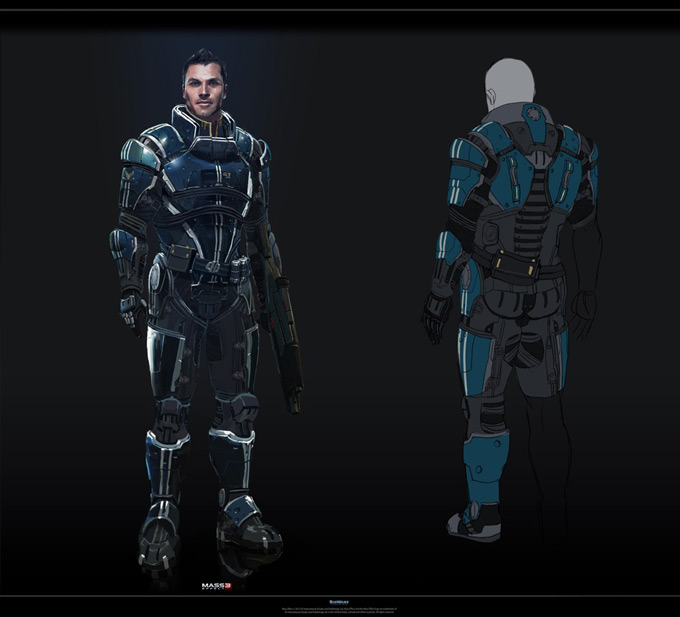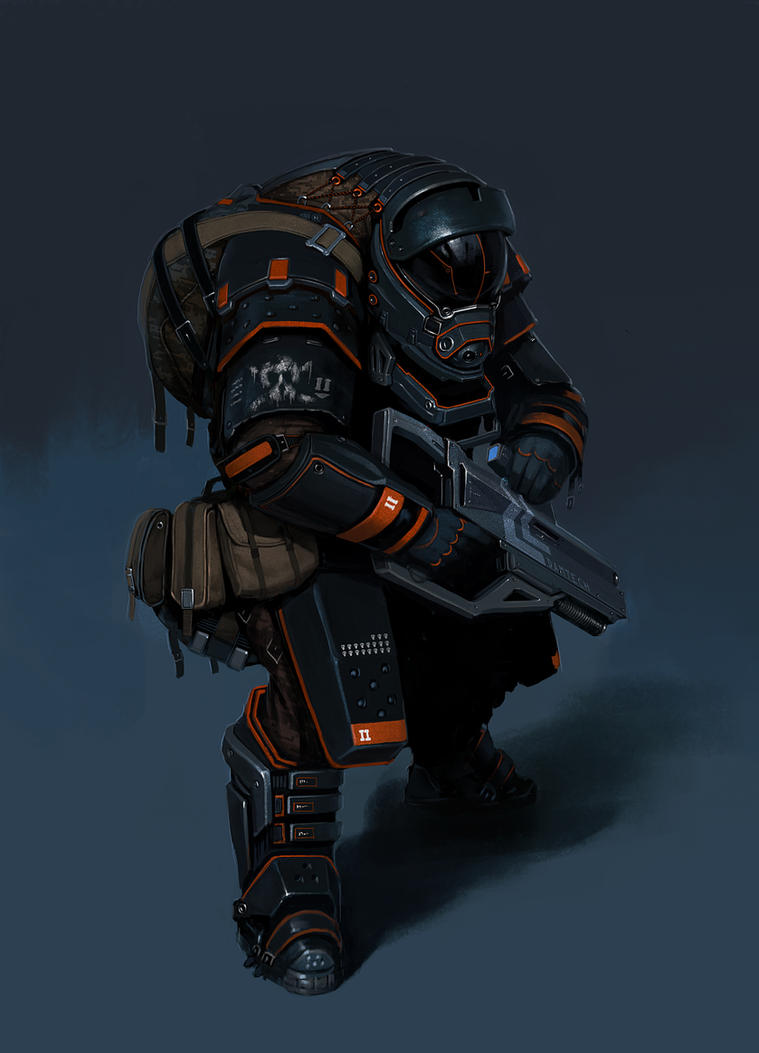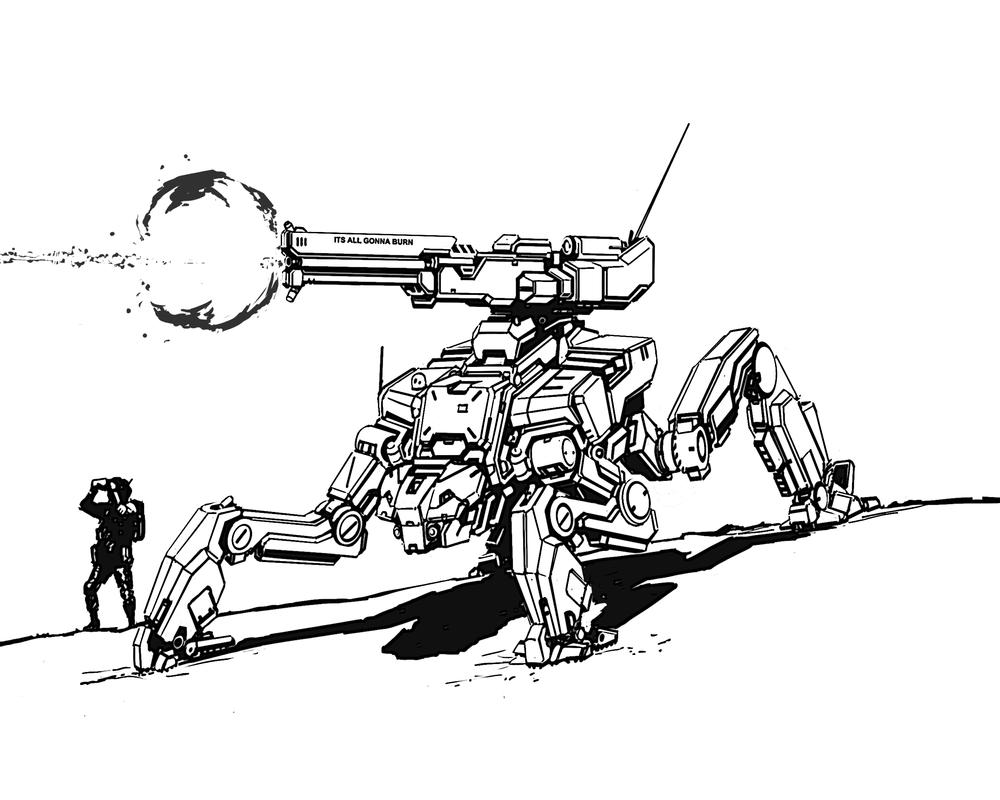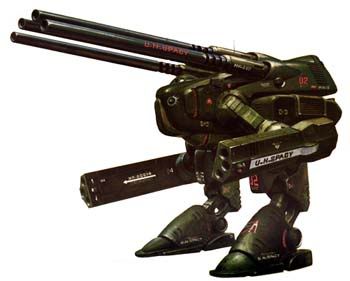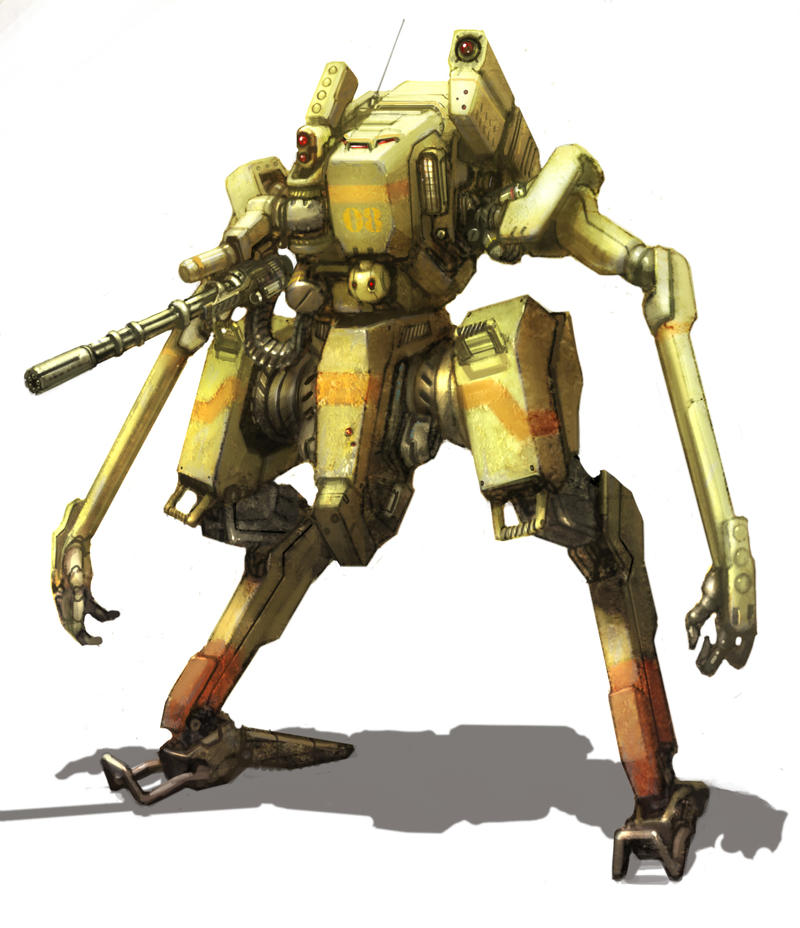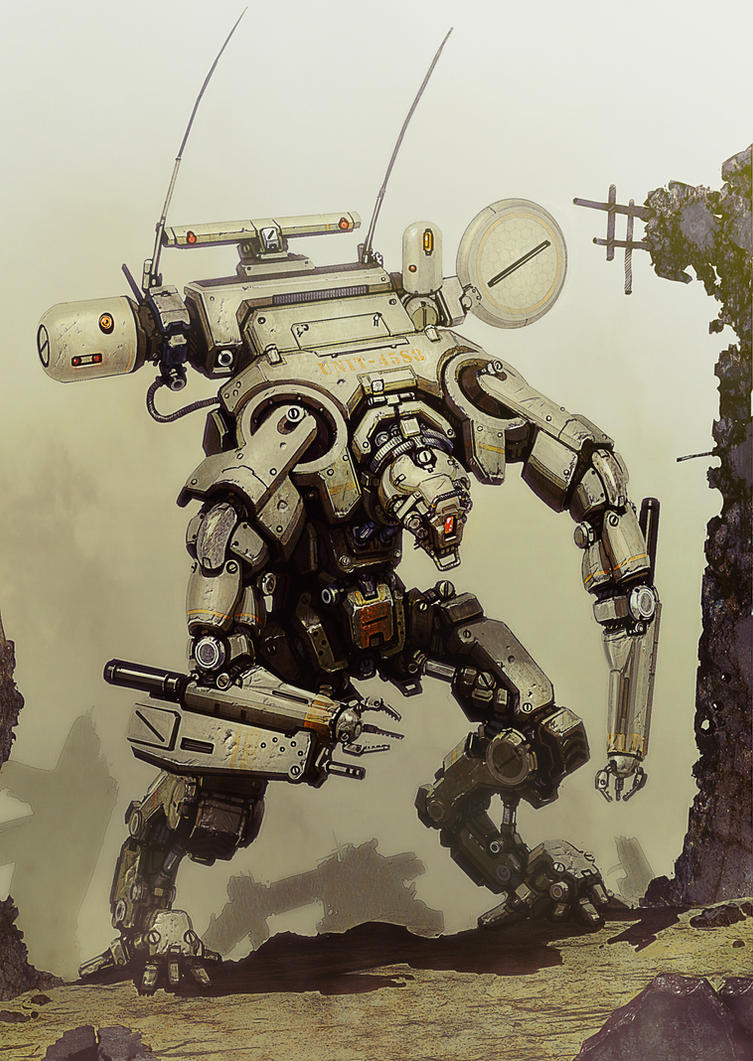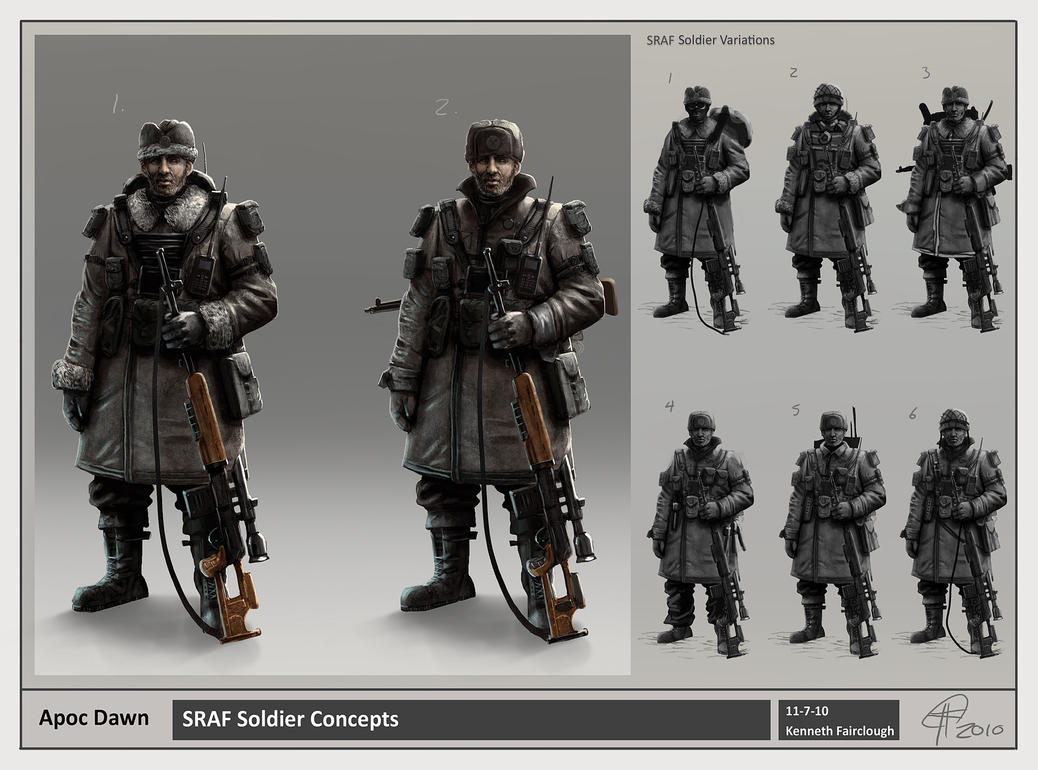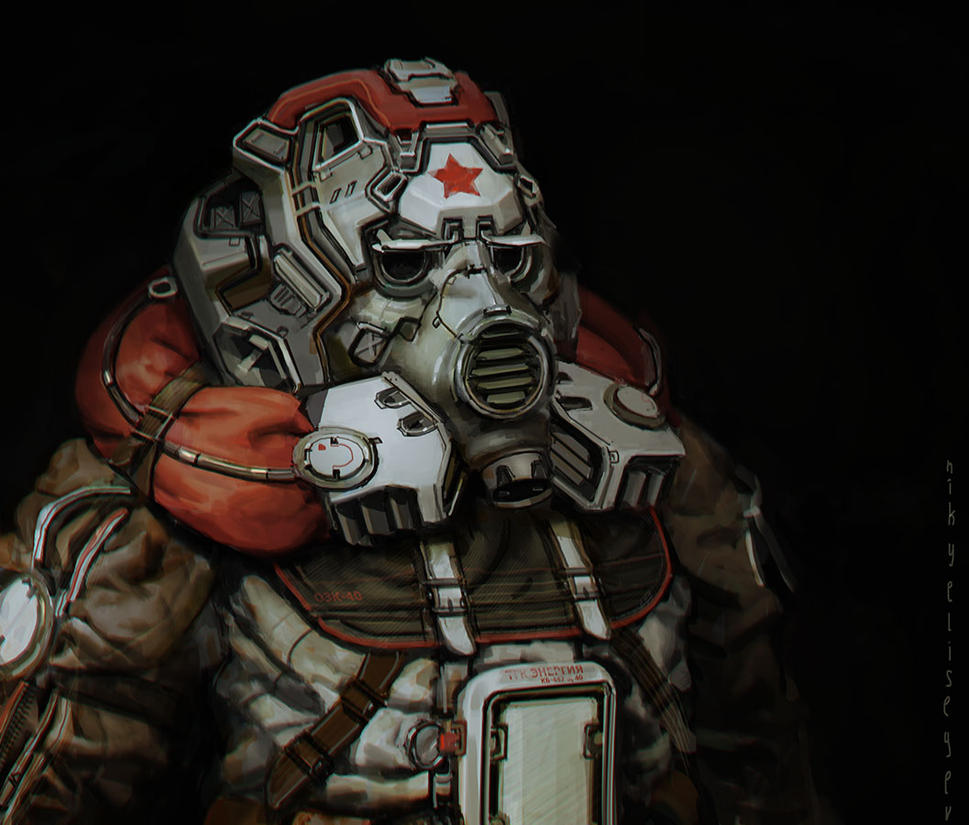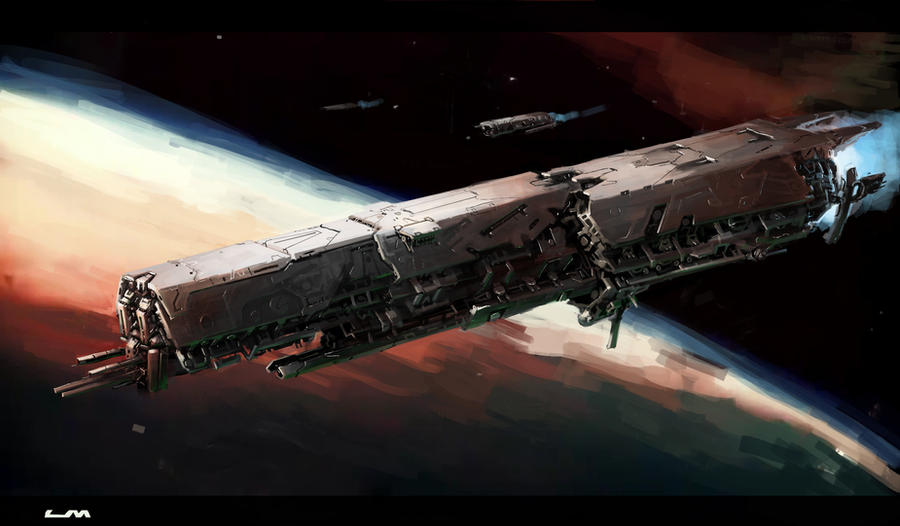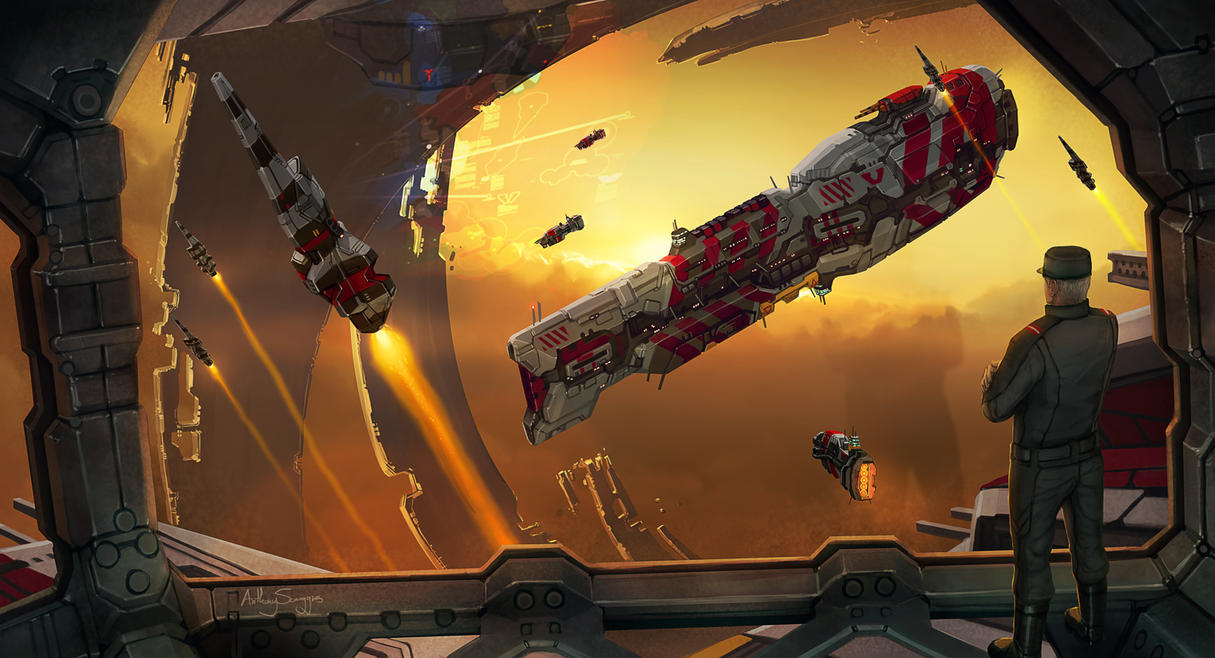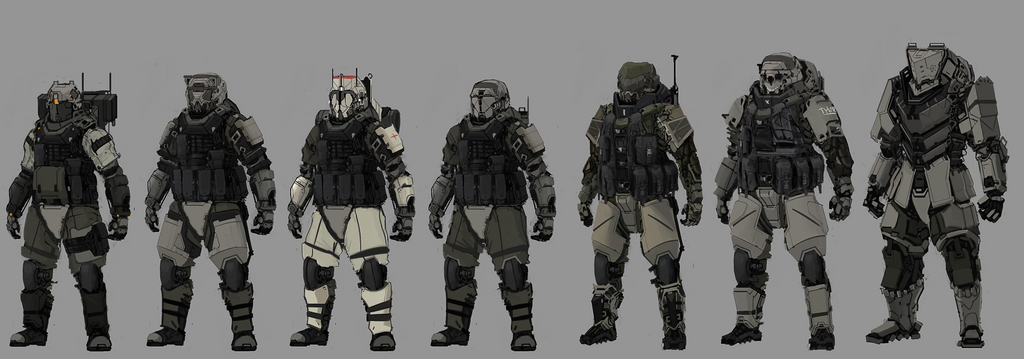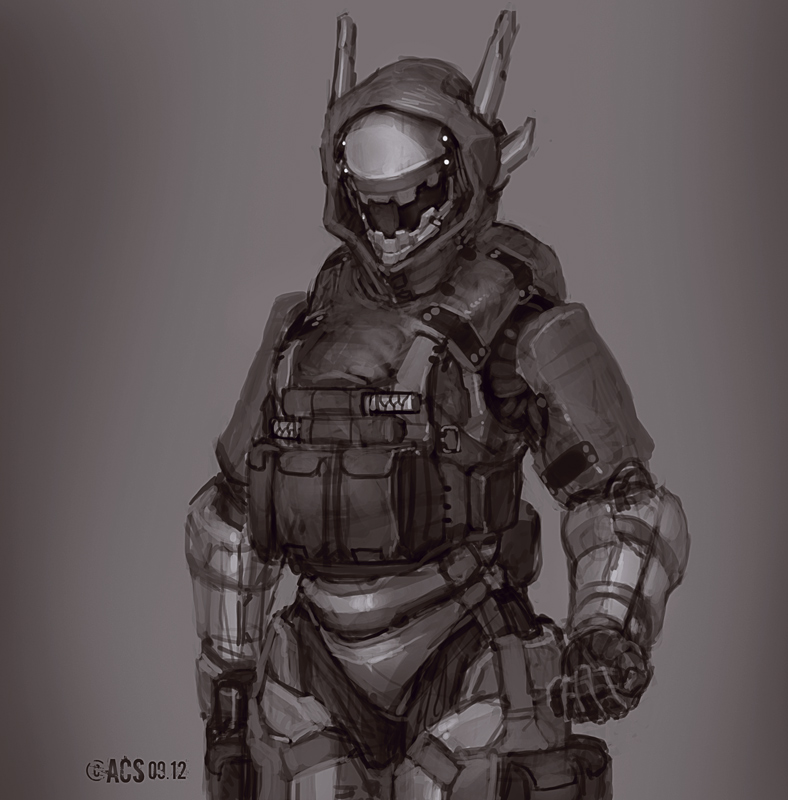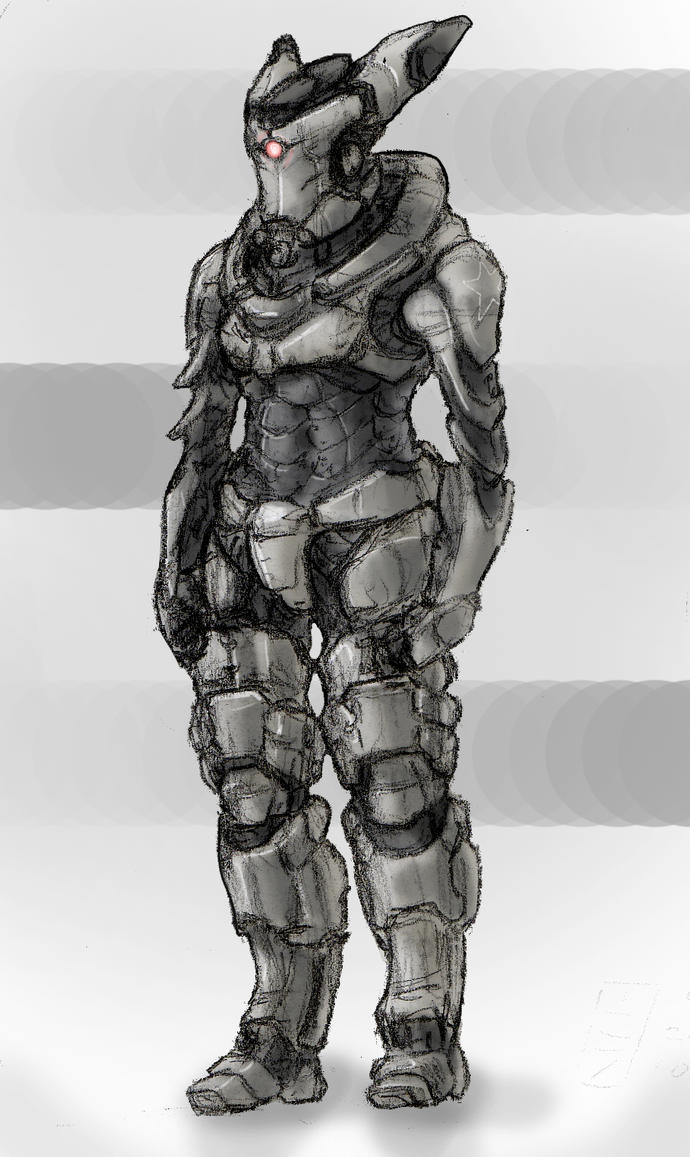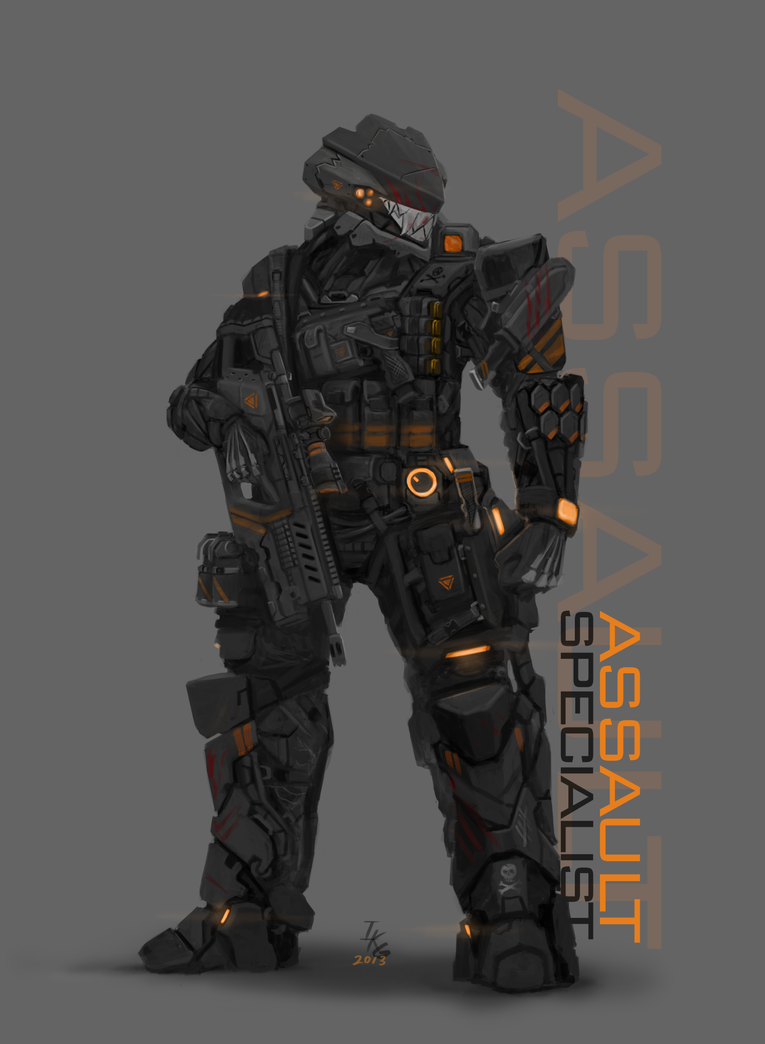Faction Name: The Revolutionary Workers' Union (RWU)
 Species: Ayar (Majority)
Species: Ayar (Majority) - Ayar are the humanoid talpids native to New Sovereignty. They have markedly cylindrical bodies covered in dark fur, unusual strength for their size (standing no more than a little over 5 feet tall), thick hands bearing clawlike nails and two thumbs, an acute sense of smell and hearing, black bulbs of eyes suited to low-light vision, and a high tolerance for carbon dioxide. Hence, Ayar are natural burrowers. However, they have better daylight vision, a less-developed sense of touch, shorter snouts, and larger arms and legs than their evolutionary ancestors, allowing them to live comfortably both above and below ground.
Ayar are difficult for many foreigners to distinguish among by sight; they identify one another primarily by smell. However, the talpids make extensive use of all five basic senses and communicate with a spoken and written language, like most other species.
Human (Minority)Faction leaders:President-Premier Jawalir Leneru - As the Union Councilor receiving the most popular votes, Jawalir Leneru holds the top position in the Council, with extra responsibilities in day-to-day administration that make him the sole member whose career is entirely devoted to this political body. Nearing fifty-two years of age, the galaxy-famous Ayar intellectual, RWU organizer, guerilla, and former head of the Revolutionary Provisional Government of Former Antoviya is ancient by the standards of his species. Though some may exaggerate the unifying effect of his political-economic philosophy of Leneruism, which owed much to existing Syndicalist and anti-colonial thought, the importance of his tireless activism and, if nothing else, his image should not be understated. Though no longer the firebrand speaker of his youth, the elderly Ayar remains sharp-witted, and if anything being more soft-spoken has helped his mission of building bridges that will outlast him. He is in his fifth consecutive term in the Union Council.
Planning Commissioner Briyandawas Karad - The Union Councilor also responsible for the RWU's most powerful central economic institution, Briyandawas Karad is the most popular Communist of the RWU. An Ayar about seven years younger than Leneru, she began her career as a militant independent union organizer among heavy industry workers and miners in the massive metropolis of Schterkar, but quickly joined the RWU after conferences held by the Provisional Government in the middle of the Revolution War. She is known as a very strong and eloquent speaker, and for her connections to the Social Reformist Federation uncharacteristic of other UCP politicians. She is in her third consecutive term in the Union Council.
Admiral in Chief Alagh Walayad - Hailing from a detached Aventian merchant family that had long integrated into the cosmopolitan society of the galactic space-lanes, Alagh Walayad is a Union Councilor and the head of the Revolutionary Workers' Navy. Before the Third Revolution War, she had already built a 20-year reputation as a Syndicalist-aligned pirate, raiding wealthy shippers to fund charity and revolution. She played a crucial role in bringing pirates to the revolutionary cause and defeating the Antoviyan fleet, and like many non-Ayar revolutionaries, she took an Ayar last name over the course of the wars. As an Anarcho-Syndicalist who is also admiral of a fleet, Walayad is more politically moderate than many others in her party but still widely respected. She often acts as a bridge between the ASF and the ULP, and she is even known to defend some SRF positions. However, she is outwardly suspicious of the Communists and the Revolutionary Guard. She is in her fourth consecutive term in the Union Council.
Field Marshal Quintus Kazamar - Union Councilor and head of the Revolutionary Guard, the human Quintus Kazamar was a slave machinist on a rural plantation on Skopjus who escaped to join the RWU guerillas early in the Revolution War. He met Jawalir Leneru in the field on the planet of Vrad and became his mentee, and later his partner, going from learning to read and shoot to co-authoring groundbreaking literature and commanding whole fronts with the Ayar. He is extremely influential among the human population as an advocate of cultural renewal in a Syndicalist framework, and he was one of the primary figures in the Second Skopjus Revolution (both in the anti-traditionalist resistance and the RWU intervention). He is even referred to by his supporters as the “Leneru of the humans,” though his politics have diverged somewhat from the elder. Kazamar is part of the ULP's so-called “hard line” faction, which is more pro-centralization than the rest without going so far as to join the Communists. He is in his third consecutive term in the Union Council.
Speaker to the Nations Jaira Devikar - This Union Councilor is the RWU's closest equivalent to a foreign minister, given the Union's ambiguous dual-role as state and international organization. This Ayar woman is the youngest member of the Union Council, only a few years old at the outset of the Revolution War. She secretly joined the RWU as a university student simultaneously studying international political economy and training in space flight, doing underground organizing and propaganda work. She finally joined the organization publicly as a small freighter captain, and she flew from system to system as an organizer and a spokesperson for the Provisional Government, and later the RWU. She is known as an especially open-minded politician, a good listener and speaker, and someone who makes people feel respected and at ease. She is a vocal proponent of the SRF, especially emphasizing its Ideologist-Internationalist platform.
System: New Sovereignty (Partial Control - dominates flow of goods and people)
Planet(s)/Territories:--
Pri (capital Victory City), homeworld of the Ayar, is a planet whose surface is split into dozens of small continents and innumerable islands. Apart from its capital, it is mostly agricultural but quite dense nonetheless as a former plantation world. The main exception is the Hauthkaj Irradiated Zone, a region of over half one of the planet's larger continents that is uninhabitable due to repeated nuclear bombings during the Revolution War.
--
Schter (capital city Schterkar), a relatively small world with an entirely rock surface, was terraformed with enough success to make some regions livable, but the extreme temperatures and weather conditions near the equator and the poles remain beyond the natural threshold of survival for most species in the RWU. It holds almost 1/3 of the system's population, concentrated in massive cityscapes that are mashes of giant drills, mining complexes, refineries, and factories. It exists in a symbiotic relationship of agricultural and industrial with Pri, food flowing one way and machinery flowing the other. Hence, when both revolted and declared their membership in the RWU early in the Revolution, Antoviya responded with a blockade and targeted bombardments that crippled both until the decisive defeat of the Ducal-Antoviyan joint fleet.
--
Skopjus (capital city Konstan) is the only planet in the RWU with a non-Ayar majority. From time immemorial, Skopjus already had its own functioning system of human-to-human slavery in place as a minor barony of the Empire, and later the Duchy. Relations with Antoviya began several centuries ago with free trade between the barony and the xeno vassal. But despite the Ayar state's inferior legal status, its economic power brought the human world de facto into its sphere of influence. Over time, Ayar capitalists disinherited traditional proprietors and vastly multiplied the ranks of slaves by integrating into it the surplus slave population from recently-mechanized plantations elsewhere in the kingdom. Originally holding a diversified economy, Skopjus was soon twisted into an export machine: its famed viticulture and olive fields ironically became the only feature of any rural land that could efficiently sustain them, and mining and industry bloated with displaced “free” humans were mostly repurposed to sustain Antoviyan military presence. Skopjus humans filled the ranks of official administrators and the petty bourgeois, but the true powerholders remained mostly Ayar until the Revolution.
--
Fral (capital city Fralkar) is a gas giant dotted with innumerable floating collection stations, whose output is crucial to RWU high industry. Fral was the very first planet to revolt in the Third Revolution War, the catalyst to the conflict that would destroy an empire. However, it is also the most autonomous of the worlds, the greatest strong point of the RWU's Anarcho-Syndicalist Front.
--
Boel (capital city Boelkar) is a moon orbiting Fral. It was founded as a terraformed Ayar settler colony comprised of a mix of convicts, immigrants, slaves, and metropolitan volunteers. The war lasted longer here than anywhere else in former Antoviya. With traditional homestead agriculture still prevalent, it is not especially dependent on the outside and never held an especially large population of slaves. More than anywhere else, the population was polarized into conservatives, here not industrialists or landed gentry but countless smallholders; and landless revolutionaries. Ironically, the cities fell relatively quickly to rebels with close ties to Fral, but the countryside would not until after the Revolutionary Guard arrived fresh from having liberated the last of officially-recognized Antoviyan soil. The moon remains one of the only sites of continued Royalist insurgency.
Faction Desc:An international labor union-turned Revolutionary Republic, RWU principles enforces the worker-owned, worker-managed cooperative as the base political and economic actor of a just society. Managers and politicians must always be elected from among the workers and revocable by vote. Corporations, individual proprietorships, directly state-owned enterprises, feudal manors, and all other such reactionary forms of organizing economic relationships are, naturally, illegal. Though such restrictions may seem stifling to those raised in the bourgeois or monarchial tradition, they allow for quite some flexibility and diversity in practice.
For example, cooperatives are free to associate themselves in cooperative federations, often grouped by industry or relevant infrastructure connections. A special type of cooperative federation is a
Union Federation, tied to the Union Council, very often the Planning Commission in particular, and serving the RWU as a whole. For example, the Union Federation of Pharmacological Cooperatives brings together various research, production, and distribution cooperatives to ensure a steady and affordable supply of crucial medication to all RWU citizen-members. Like any cooperative federation, Union Federations are freely associated, though there are often financial incentives to join and costs a cooperative would incur naturally by leaving. Another creative transformation, the
Commune, is a model associated with the Union Communist Party and more popular in heavy industry than in other sectors. It amalgates the various and diverse industries of entire villages, districts, cities, provinces, and occasionally even a region into a single highly-diversified cooperative.
However, law and philosophy alone never fully shape a system: The realities of history and present-day resources are equally, if not more, important. As a territorial and highly populous empire built on slavery, Antoviya had perfected the art of the plantation and its derivative industries, leaving the RWU with an extremely productive agricultural infrastructure that mostly survived the destruction of the Revolution Wars. Granted, much of it still requires reorientation so the workers can feed their own mouths instead of the delicate tastes of aristocrats and wealthy foreigners. Mining and heavy industry were hit harder, but also quite developed and widespread beforehand, making them another characteristic asset recoverable post-revolution. However, Antoviya's high technology sector and developed consumer goods industries were concentrated in the bourgeois-aristocratic centers most devastated and destroyed by the Revolution, leaving the RWU very limited in these regards. Furthermore, until the destruction of its fleet, Antoviya systematically demolished the infrastructure and communities of every spaceport that turned its flag to the Red Star, and the RWU has struggled to replace the crucial logistical and commercial connections lost.
This makes the RWU overall quite powerful at its base in terms of raw agricultural and industrial potential, but lacking in the more refined sectors and connecting infrastructure to fully realize it. This is compounded moderately by the limits current RWU-style Syndicalism place on centralization and government intervention, though that tendency also provides the advantage of encouraging greater self-sufficiency at local levels.
Currently, the primary dividing lines in the Union are partisan, as follows:
Anarcho-Syndicalist Front – This is a party with a very long history, in some ways representing of the “Old Guard” of the pre-reform RWU. Only the most extreme elements of the party are truly “anarchist” in the support of categorically opposing the state. Rather, their main rallying point is the empowerment and autonomy of the lower Takudars and cooperatives on the one hand, and limiting central institutions to well-defined narrow roles on the other. For example, the Anarcho-Syndicalists are generally wary of the Revolutionary Guard and support the distribution of military professionals, technicians, and heavy weapons (such as mechs) to the People's Militias. They are also strong proponents of direct democracy, exerting a constant pressure to reform some higher-level institutions to better incorporate it. Perhaps quite appropriately, the ASF is the smallest of the “Big Four” RWU parties, but it is extremely popular among the RWU's international branches, radicalized former pirates, and the population of Fral.
Social Reformist Federation – The RWU's newest major political faction, the SRF is characterized by two major political goals. First, they seek to expose persistent reactionary culture at home and combat it through education, state support for mutual aid and activist organizations of traditionally marginalized groups (non-Ayar, women, etc), and educational campaigns. Secondly, they emphasize the power of diplomacy and “soft power” in international relations, and they advocate a strong respect for cultural differences that might make Syndicalism look different for every society and even be inappropriate in some. The party is the second-smallest of the “Big Four.” The SRF is popular among non-Ayar, women, and academics/intellectuals, but it lacks support from the international branches.
Union Communist Party – The second-largest RWU party and arguably the best-organized and best-drilled, the Union Communist Party is the Union's strongest voice for centralization. It has made a name for itself with the two famous institutions: The Union Planning Commission, which instituted the highly-successful First Five Year Plan, and the Communes (discussed earlier). More so than other parties the UCP tends to evoke strong feelings: People are often either greatly inspired or deeply troubled by its hard-line politics. It is especially popular among the Revolutionary Guard and certain segments on the Navy, heavy industry workers, and many academics/intellectuals. Like the SRF, it generally lacks support from the international branches.
Union Leneruist Party – Since the beginning of the Revolution Wars, this party has been the majority party of the RWU. It is associated with the political philosophy of Jawalir Leneru and the pre-Revolution RWU reforms. It is a relatively centrist party that seeks to maintain a pragmatic balance, while leaning in favor of central institutions in the name of the democratic mandate. Historically, it has been associated with several implicit “pacts:” raising union dues during wartime and lowering them afterwards, expanding central institutions but respecting the autonomy of Takudars, and making deals with foreign powers with the understanding that certain lines cannot be crossed. It is also associated with the famous book (jointly-authored by Jawalir Leneru and Quintus Kazamar) Cultural Self-Determination and Syncretism, a call for non-Ayar to reclaim their ancestral cultures at the same time as they came together in solidarity along with Ayar in the name of Syndicalism. The ULP is popular among all segments of RWU society, generally well-respected even by its enemies, and the only party besides the ASF with significant sway in the international branches. However, with its internal diversity on the rise and its primary spokesperson, Leneru, reaching the end of his years, it could very well fracture or lose prominence in the forseeable future.
Minor parties: Various small parties are known in the RWU political scene, but none come anywhere close to the influence of the Big Four. One well-known minority party is Ayar Syndicalists Unite, an Ayar-nationalist party with a growing following among some more traditionalist and xenophobic Ayar. Though it follows the Leneruist platform on most issues, its often blatant racism and language of cultural superiority has made it suspect in the eyes of the Big Four. Another well-known minor party is the Democratic Socialist Progressive Party, a pro direct democracy splinter group formerly tied to the UCP.
History:The Revolutionary Workers' UnionThe original organization existed for centuries before its rise to statehood, even for some time before the fall of the Empire. It was a Syndicalist labor union based on the idea of cutting across the lines of specific trades and role, but focused exclusively the industrial working classes as the “harbingers of Revolution.” For decades, it was a small force of highly-politicized, well-organized activists with relatively few actual unionized workplaces to their name, but which catalyzed and often steered much larger coalition movements. However, sixty years ago, political divisions between the “centralizers” and “decentralizers” ended cathartically with several reforms that would change the Union forever. Firstly, the Union Council was established and given significant central powers. Second, doctrine was reformed to include peasants, agricultural laborers, slaves, technicians, and all other manner of workers as essential to revolution. This expanded RWU membership in all branches, but especially in the Antoviyan Kingdom. So much more, in fact, that the struggle in Antoviya would eventually dominate the Union's attention, ending in the Revolution for which it is famous today.
The Antoviyan KingdomAntoviya first became a spacefaring power a little over two centuries ago, when it won the Ayar homeworld's race for military starships. It was a royal house actually considered weaker than most of its competitors. While other kingdoms had carved colonial empires in the later stages of their industrial era, Antoviya had been left to its historic borders. However, it made its name as a financial powerhouse, and when the Great Powers set off the Ayar World War, Antoviya's King Antov XIII stepped in decisively by endorsing the total rebellion of the colonies. Nuclear weapons were not an option, it seemed, with every power possessing highly-effective missile defense systems. However, decades of war were suddenly ended when Antoviya launched the planet's first military starships, trumping missile defense with nuclear fire from orbit. The king was then quick to turn on his colonized “allies,” using his space forces to wipe out centers of rebel activity and enact reprisals against any community suspected of aiding them. The struggle of these anti-colonial rebels is considered the First Revolution War. Afterwards, mass slavery was instituted, and the Antoviyan plantation system began.
As time went on and Antoviya integrated into intergalactic politics, advancements in mechanized agriculture temporarily displaced agricultural slavery, pushing masses of Ayar into tinto the industrial work of the urban poor -or lower administration, for the lucky ones-. The systemic violence only intensified after Antoviya was brutally conquered by the Empire, as the nobility sought to compensate for crushing imperial taxes by squeezing the most it could out of the population. At a few brief and violent intervals, the king's supremacy was challenged, but such resistance was quashed by heavy repression and the support of the Empire, which still preferred the Ayar nobility to the rabble.
However, after the fall of the Empire, Antoviya enjoyed a short period of independence, during which it developed new labor-intensive farming technology, which came to be known as Rhizomatic Industrial Density (RID) agriculture. This made the enterprise of forced labor profitable again. But without reliable means to re-enslave billions of Ayar, Antoviya pushed the institution onto other species. Understanding that they could not simply raid the more powerful neighboring Duchy, the Antoviyan nobility pledged loyalty to human overlords once again, but this time willingly. Happy to have the resources and territory of the Ayar back in the fold without the pain of yet another war, the Duchy took an accommodating stance towards its returned vassal. Antoviya was allowed to maintain its fleet, including its super-dreadnoughts, and even participated in several operations alongside the Ducal fleets. More importantly, Antoviya was provided with generous legal channels to acquire human labor, and it soon became the premier slaver of the galaxy. Conniving nobles wanting to prove total victory against their foes, administrators in need of places to send vagrants and criminals, and corporations seeking to make some extra money as they cut out excess labor: Every corner of Ducal society came to appreciate the option to "send them to the plantations."
The Revolution WarThe Revolutionary Workers' Union had underground elements in Antoviya as long as one-hundred years before the monarchy fell. However, a number of factors converged forty years ago to light a powderkeg never witnessed before in the kingdom: the rise of a class of radical revolutionary Ayar intellectuals, the consolidation of RWU reforms, and the gradual degradation of Ducal power.
The rebellion began in the colonies, starting with Fral, the gas giant of what is now the New Dawn System. RWU-aligned pirates, and later Antoviyan Royal Navy defectors, swarmed to the revolutionary cause. They harassed Antoviyan space forces in the orbit of Fral with constant raids and shipments of anti-space batteries, hampered Ducal intervention with well-coordinated operations that brought impressive space defenses to the system, and eventually decisively defeated the loyalist Antoviyan fleet, forcing the king to renounce nuclear conflict for fear of reprisal. The rest of the war proceeded as a “convential” conflict, though this implied no shortage of blood and atrocity on all sides. It ended for a time eight years ago with truce negotiations among the RWU, Antoviya, and the independent revolutionary movement of Skopjus. Antoviya was left as an isolated kingdom on Pri with a single space colony, the moon of Boel in the New Dawn System. The RWU then called for its first official elections as a state, ending in a resounding affirmation of Syndicalism, though with many notable divisions within this. For five years afterwards, the RWU was at peace and devoted its energies to reconstruction and implementing the political and economic structures of Syndicalism. This was interrupted only very briefly when the Revolutionary Guard intervened on behalf of Syndicalist revolutionaries on Skopjus, bringing the system into the RWU fold with a speedy victory over a shortlived ultra-traditionalist monarchy. But after those first five years, the Revolutionary Guard undertook a new grander operation on behalf of rebels in the remaining Antoviyan territories. The revolutionaries were methodical in their isolation and extermination of the royalty, and the only remaining traces of the nobility hide in the wastelands of the Hauthkaj Irradiated Zone, where the old King had attempted to drown the revolution in nuclear fire.
Thus, with the Revolution War barely over, Ayar culture is in a time of transformation. The old, Antoviyan ideologies of royal privilege, race hierarchy, patriarchy, autocracy, capitalism, and imperialism, have been rejected wholesale by the revolutionary ideology of Syndicalism. They are being phased out by a combination of the revolution's natural popularity, suitable "publicity" released by the Union Council, and the ongoing extermination of the scattered remnants of the old Antoviyan regime. In their place are being set the values of the Revolution. Yet, matters are more uncertain now than ever. With Antoviya dead and buried, the RWU must look to its neighbors, and to the Ducal authorities above. Its current status in the Duchy is ambiguous, with some considering it a mere rebel front while others see possibilities for its integration. For the moment, the RWU has yet to definitively address the great at Houses on this matter, nor has the Duchy declared an official stance of its own.
Will the Revolution bring Syndicalism to the stars? Or will the brief light of Workers' Democracy be crushed, or worse, corrupted?
Government type: Democratic Confederation and International Labor Union
The RWU is an ambiguous structure that constitutes both a sovereign state and a labor union. in its many levels of governance, the RWU combines elements of direct democracy and representative democracy, and its primary institutions are as follows:
The Takudar System – A synthesis of traditional Ayar village democracy that rallied prior rebellions and pre-reform RWU industrial workers' councils, Takudars are both the primary basis of RWU government and the extension of its base economic actors, the cooperatives. They are based on the principles of direct democracy and authority from the bottom up. Outside of RWU sovereign territory, Takudars may simply refer to themselves as “councils,” but the Ayar terminology is popular even far outside of former Antoviyan territory. A member of any Takudar is referred to either as a takudari or a workers' delegate. A noteworthy characteristic of the office is that it is revokable by the lower levels, making Takudaris very committed to representing their constituents. They operate on five consecutive levels, from smaller and more organic to larger and more removed: (1) Workplace, (2) Local, (3) Provincial/Municipal, (4) Regional, (5) Planetary.
There are two special classes of Takudars. First, the Union Communist Party's famous
Commune Takudars are huge Municipal, Provincial, or even Regional Takudars each of which governs an amalgation of communities that have consolidated into a single, massive, highly-diversified cooperative (known as Communes). Lower-level Takudars do not exist in this system. Second, Municipal/Provincial Takudars for Revolutionary Workers in the sovereign territory of other nations have special status. They are the highest Takudars outside of sovereign RWU territory. They respond directly to the Union Council and Revolutionary Workers' Congress, and each Takudar's territory is almost always referred to by the simple pre-reform name of
“The (Region/City Name) Local” to designate its special status.
The Revolutionary Workers' Congress – Every Regional, Planetary, and International “Local” Takudar sends delegate with a single vote to the RWC. Here broad policy goals and timetables are set, the Union Constitution is modified, treaties are ratified, and revenue mechanisms are determined. Because every Municipal/Provincial-level “Local” has given voice equal to a region or planet, delegates from outside of RWU sovereign territory have disproportionate power in the Congress relative to the number of workers they represent. Nonetheless, in total, the clear majority of seats are held by representatives hailing from former Antoviyan lands.
The Union Council – This is arguably the most powerful single institution of the RWU, and it has broad authority to set and execute policy according to frameworks and goals set by the Revolutionary Workers' Congress. Notably, it has spending authority over the large RWU non-discretionary central budget and is the official commanding body of the Revolutionary Guard. It also has the authority to submit legislation to Congress to request large-scale structural/policy changes. The Union Council is comprised of five members, nominated by the Revolutionary Workers' Congress and confirmed or denied in an RWU-wide general election every five years. Every member is revocable by a 2/3 majority in the Revolutionary Workers' Congress or a simple majority in an RWU-wide referendum.
Notable Technologies:Rhizomatic-Industrial Density Agriculture – The famous product of Antoviya's “Second Green Revolution” two centuries ago, this is a combination of inputs and infrastructure that allows for extremely large and dense agricultural yields. Carefully-engineered fungal strains boost soil nutrient richness; otherwise individually-growing plants are genetically modified to form tightly-packed rhizomes; efficient, compact solar generators bring light to elaborate underground growing tunnels; and agricultural refining and processing facilities are neatly integrated on-site alongside storage. This rural factory of sorts is often accompanied by special infrastructure to accommodate difficult terrain, such as well-developed terracing that allows entire mountains to become giant farms. This system was once the basis of the archetypal Antoviyan slave plantation. Today, it allows the self-liberated workers who have reclaimed it to produce the Union's remarkably large output of food, textiles, and other agricultural products that sustain its dense population.
Arcologies – To house its large and growing population after the Revolution War, the RWU combined stolen Antoviyan research, contributions from foreign sympathizers, and its own limited scientific resources in a concerted effort to develop innovations in mass housing. The result was a massive complex, both above and below ground, that combined solar generators, hydroponic and underground RID agriculture, rainfall and underground water current collection, and tens of thousands of housing units into a single structure. These largely self-sufficient buildings can sustain immense population density, a possible key to converting larger portions of the RWU economy away from simply feeding the people. However, arcologies have so far been implemented only in select locations, notably in Victory City.
Combustion Light Gas Gun – Using the steady supply of gasses from Fral, one of the RWU's very first military innovations was the perfection and large-scale production of bullets and shells with light gas propellants. These give RWU forces a punch comparable to magnetic accelerators at much lower cost, without the need for powerful batteries or generators, and compatible with stockpiles of sturdy old-model weapons originally designed for gunpowder-propelled ammunition.
Starship Bulkhead Lattice – A technological advantage handed down from Antoviya, this special damage control system was designed to protect the Kingdom's prized super-dreadnoughts. Intricate, multi-layered networks of bulkheads and several levels of redundancies mean that the even if the outer hull sustains a serious beating and many breaches, the overall structure will remain intact and functional.
Military Capabilities:Revolutionary Guard:This is the RWU's professional military, a force that came about with the eventual need to decisively defeat Antoviyan forces in open battle during the final stages of the Revolution War. It was built as a powerful shock arm to complement the People's Militia, and it was adapted to the RWU's strengths and limitations at the time. As such, it is built on the basis of the light mech and the tank-hunter: High mobility, adequate flexibility, and a powerful punch against enemy strong points without the high maintenance of infantry power-armor or the sheer cost of heavy tanks. Since then, with improvements in RWU industry, the Revolutionary Guard has expanded, advanced, and diversified to become a force in its own right.
Though The Revolutionary Guard is not quite up to the level of the professional armies of other nations in terms of technology, it makes up for this in modularity, cost-efficiency, and the sheer amount of mechanized forces it can field. Very often, the footsloggers function mostly to screen and spot for armored forces. In fact, some of the more modern Revolutionary Guard divisions are entirely mechanized, mimicking infantry units with specially-adapted light walkers for scouting, logistics, and communications.
People's Militia:This is the bread and butter of RWU armed forces. For all the awe of the Revolutionary Guard-led finale to the Revolution Wars, it was the People's Militia that won the long, brutal war of insurgency and attrition that brought Antoviya to its knees. Though it is a force of part-time soldiers, organized by local governments and drilling weekly, the People's Militia benefits from several distinct advantages: swathes of revolutionary veterans, a large and willing pool of volunteers motivated by history and ideology, and the huge amount of (often foreign) weapons and ammunition left over from the last three decades of war. These have historically given the People's Militia firepower and versatility beyond the expectations of a non-professional force, particularly with the RWU's emphasis on developing and acquiring better infantry anti-air, anti-tank, and support weapons. Of course, these advantages also come with overwhelming diversity, which makes the force quite difficult to coordinate on a grand scale. Overall, the People's Militia is a premier force for softening and outlasting opponents, the anvil to the Revolutionary Guard's hammer.
The Cells:Taking orders directly from the Union Council as necessary, but mostly operating autonomously when in the field to avoid compromising one another, these forces' heritage was the birth of the RWU armed struggle. They are bomb-makers, assassins, saboteurs, and professional guerillas ready to shake the fragile illusion of social peace with precision timing and targeting. Wherever an RWU branch exists, a cell can exist also, if it does not already. Of course, “activating” a cell, let alone actually carrying out clandestine war and terrorism, is always risky business. Anyone discovered might be linked to the RWU's otherwise “civilian” political organizations, doing far more harm than good to the cause of Syndicalism. But if used with care, patience, time, and the right social conditions on the ground, they can strain the very fabric of society to the benefit of the revolutionary mission. With such high risk and high potential reward, the Cells are mostly liabilites to remain hidden during peace time, but a secret source of strength when the hour of war and revolution arrives.
Revolutionary Workers' Navy:The RWU's space forces are, first and foremost, a political nightmare. As Admiral Alagh Walayad put bluntly, “I have been charged with the direction of the Union's most power-hungry anarchists and disorganized communists.” The Revolutionary Workers' Navy, while officially one organization, is essentially split into two camps. Radicalized former pirates and free anarchists who joined the RWU now form a highly-mobile but somewhat fragile force of roughly frigate-class Hunters and Reapers, respectively devoted to point-defenses and one or two powerful anti-starship weapons. Their crews are masters of improvising, jerry-rigging, scrap-collecting, and generally "living off the land" of outer space, allowing these forces to operate without the usual logistical channels of most navies.
On the other hand, former Antoviyan defectors constitute a near-copy of the old Kingdom's forces, centered around their few famous Super-Dreadnoughts. While they are not nearly as self-sustaining as Hunter-Reaper squadrons, they have the advantage in overall firepower and ship durability. In fact, because of old Antoviya's unique privileged status in the Duchy, the RWU has inherited some of the most powerful ships of the line outside the Ducal Navy: Twelve Ayar Super-Dreadnoughts, supported.by hundreds of cruisers and carriers.
Stark internal divisions do not render the RWN is ineffective: It decisively defeated Antoviyan and (limited) Ducal fleets in open battle, after all. Rather, it is to say that, except in times of absolute crisis, the RWN can only operate effectively when each faction is carefully managed and not forced to work too closely with the other.
These seven-kilometer beasts have heavy but outdated dual shielding, a defensive electromagnetic field and complementary plasma layers. However, perhaps because networks and tunnels are so intuitive to Ayar, they have the Duchy's most intricate systems of bulkheads and redundancies, essentially a thick lattice under their armor. While the loss of shields is grave news for most warships, unshielded Ayar Super-Dreadnoughts have been known to withstand grueling bombardments while remaining functional and in one piece. Although the Antoviyan Kingdom outfitted them almost exclusively with lasers and particle beams, the RWU has bolstered their short-range firepower with various calibers of CLGG cannons.
Though the hulls of these ships were inherited from old Antoviya, they have been heavily modified and rearmed by the RWU in preparation for any potential war with the Great Houses. They serve as hybrids between artillery ships and point-defense platforms, with two frontal particle beam cannons, racks upon racks of torpedoes, and rows of laser pulse defenses and CLGG gatling guns. They also carry oversized engines, allowing surprising speed and agility for ships of such size. However, their shielding is nothing to brag about, and they are too small to support the remarkable damage-control systems of the Super-Dreadnoughts. Though not as fragile as Hunters or Reapers, they must lean on their agility and firepower to make up for mediocre durability.
By the standards of the Seven Suns, RWU carriers are noticeably small, hardly larger than cruisers. This is because their role is fundamentally different than in most navies: They are the Union's standard patrol vessels, meant to face unfriendly pirates and other counter-revolutionary nuisances rather than proper fleets. Thus, their complements include no true bombers, only interceptors and heavy fighters. They themselves carry only point-defenses and a few rows of medium CLGG cannons to take out the odd brigand destroyer or frigate. Yet, they can serve a role in pitched battles, especially by bolstering the fleet's defense against bombers. And unlike the cruisers, they sacrifice speed for thick shielding and armor.
Despite their eclectic mix of everything from crew species to power source to shielding type, Reapers share a few things in common. Firstly, each is essentially a flying glass cannon. Secondly, each is as nimble and quick as a corvette while being the size of a frigate. Reapers are devoted capital ship hunters, relying on their maneuverability to avoid heavy artillery fire so they can punch through their more ponderous enemies with their own.
The sturdier of the complementary duo, Hunters are relatively well-shielded and chock full of point-defenses to thin the ranks of enemy projectiles and small craft. They are the anvil to the Reapers' hammer, the bane of countless fleet commanders who foolishly trusted a few fighters and corvettes to eliminate their anarchist adversaries.
